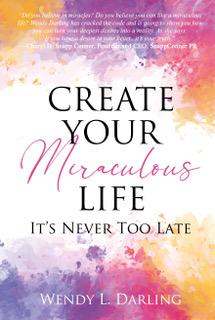People's Choice
The Ultimate Guide to Writing a Short Story Book That Captivates Readers

Writing a short story book can be an exciting and rewarding experience, but it requires a lot of planning, creativity, and hard work. In this article, we will provide a step-by-step guide on how to write a short story book, including tips on choosing a topic, developing characters and plot, writing dialogue, editing and revising, and publishing and marketing your book. By following these strategies, you can create a well-crafted and engaging book that resonates with readers and establishes your career as an author.
Getting Started with Writing Short Story Books
Short stories are an excellent way to tell a complete story in a compact form. If you’re considering writing a short story book, it’s essential to have a clear understanding of what short stories are and what makes them different from other forms of writing.
To begin with, a short story is typically under 10,000 words in length and can be read in one sitting. The story has a clear beginning, middle, and end, and usually focuses on a single event or character. Short stories are an excellent way to experiment with different genres, styles, and themes, and can be a great starting point for novice writers.
If you’re thinking about writing a short story book, the first step is to decide on the genre and theme of your book. Think about what type of stories you enjoy reading and what you’re passionate about. Once you have an idea of the genre and theme, start brainstorming story ideas.
Next, consider your audience. Who do you want to read your book, and what do they expect from a short story collection? Your target audience will influence the language, tone, and content of your stories, so it’s essential to have a clear understanding of who you’re writing for.
Finally, before you start writing, it’s a good idea to read other short story books in your chosen genre. This will give you an idea of the style, structure, and pacing of successful short stories and help you develop your own unique voice as a writer.
Developing Characters and Plot in Short Story Books
 Now that you’ve decided on the genre and theme of your short story book, it’s time to develop the characters and plot. The characters in your stories should be well-developed and relatable to your audience. Readers should be able to identify with the protagonist and understand their motivations and desires.
Now that you’ve decided on the genre and theme of your short story book, it’s time to develop the characters and plot. The characters in your stories should be well-developed and relatable to your audience. Readers should be able to identify with the protagonist and understand their motivations and desires.
One way to create well-developed characters is to use character profiles. This involves creating a detailed description of each character, including their physical appearance, personality traits, and backstory. This information will help you understand your characters better and ensure that their actions and motivations are consistent throughout the story.
Once you have developed your characters, it’s time to create the plot. In short stories, the plot is often straightforward and focused on a single event or conflict. The conflict should be clear and well-defined, and the resolution should be satisfying to the reader.
One way to create a compelling plot is to use the “three-act” structure. This involves dividing the story into three parts: the setup, the confrontation, and the resolution. The setup establishes the characters, setting, and conflict, the confrontation intensifies the conflict and creates tension, and the resolution resolves the conflict and provides closure to the story.
Another important aspect of developing characters and plot in short story books is to show, not tell. Rather than simply telling the reader what is happening, use descriptive language and show the reader the actions and emotions of the characters. This will create a more immersive reading experience and help the reader connect with the characters and the story.
Pacing and Structure in Short Story Books
The pacing and structure of your short story book are essential to keeping your readers engaged and interested. Pacing refers to the speed at which the story progresses, while structure refers to the way the story is organized and presented.
In short story books, pacing is critical because the story needs to be concise and well-paced to maintain the reader’s interest. If the story is too slow, readers may become bored and lose interest, while if the story is too fast, readers may feel overwhelmed or confused.
One way to maintain a good pace in short story books is to use a variety of sentence lengths and structures. This will create a rhythm to the story that keeps the reader engaged and interested. Varying the sentence length also helps to create tension and suspense, as shorter sentences can create a sense of urgency, while longer sentences can create a sense of calm and reflection.
In addition to pacing, the structure of your short story book is also critical. Short stories typically follow a linear structure, with a clear beginning, middle, and end. However, there are many different ways to structure a short story, depending on the genre and theme.
For example, some short stories use a non-linear structure, where the events are presented out of order or through multiple perspectives. This can create a sense of mystery and intrigue for the reader, as they piece together the story through different perspectives and timelines.
Another way to structure a short story is to use a framing device. This involves using a story within a story, where the main story is framed by a secondary story. This can add depth and complexity to the story and create a sense of narrative distance between the reader and the characters.
Editing and Revising Your Short Story Book
Once you’ve completed the first draft of your short story book, it’s essential to edit and revise your work to ensure that it is polished and ready for publication. Editing and revising can be a time-consuming process, but it’s necessary to create a well-written and engaging book.
The first step in editing and revising your short story book is to read through it carefully, looking for errors and inconsistencies. This includes spelling and grammar mistakes, as well as plot holes, inconsistencies in character development, and pacing issues.
After you’ve identified any errors or inconsistencies, it’s time to revise your work. This may involve rewriting certain sections of the story, adding or deleting characters, or reworking the plot to create a more cohesive and engaging narrative.
Another important aspect of editing and revising your short story book is to seek feedback from others. This can include beta readers, writing groups, or professional editors. Feedback can help you identify areas of your book that need improvement and provide valuable insights into how your book is being perceived by others.
When editing and revising your short story book, it’s important to keep your target audience in mind. Ensure that the language, tone, and content are appropriate for your audience and that the story is engaging and relatable to your readers.
In addition to editing and revising the content of your short story book, it’s also essential to pay attention to the formatting and presentation of the book. This includes the cover design, font choice, and overall layout of the book. These elements should be consistent with the genre and theme of your book and should create a professional and polished appearance.
Publishing and Marketing Your Short Story Book
Once you’ve completed the editing and revising process, it’s time to consider publishing and marketing your short story book. There are several options available for publishing your book, including traditional publishing, self-publishing, and hybrid publishing.
Traditional publishing involves submitting your book to a literary agent or publisher, who will then handle the editing, design, printing, and distribution of your book. This option can be time-consuming and competitive, but it can provide a wider audience and more credibility for your work.
Self-publishing involves taking control of the publishing process yourself, including editing, design, printing, and distribution. This option allows for greater creative control and can be a faster and more cost-effective way to get your book into the hands of readers. However, self-publishing requires more effort in terms of marketing and promotion to ensure that your book reaches a wide audience.
Hybrid publishing is a combination of traditional and self-publishing, where an author pays for certain publishing services while retaining some creative control over the book. This option can be a good compromise for authors who want more control over the publishing process but also want some assistance with editing, design, and distribution.
Once you’ve decided on a publishing method, it’s essential to develop a marketing strategy to promote your book and attract readers. This can include building an author website or blog, creating a social media presence, reaching out to book reviewers and bloggers, and hosting book signings or readings.
It’s also important to consider pricing and distribution strategies for your short story book. You’ll need to decide on a price that is competitive with other books in your genre, and consider where and how your book will be distributed, such as through online retailers or in brick-and-mortar bookstores.
In conclusion, writing a short story book can be a challenging but rewarding experience. By following these tips and strategies, you can create a well-crafted and engaging book that resonates with readers and helps to establish your career as an author.
Editor's Choice
Search: The Naina Murder Case — India’s Finest Crime Drama This Year?

Search: The Naina Murder Case — India’s Finest Crime Drama This Year?
When Konkona Sen Sharma steps into the khaki uniform as ACP Sanyukta Das, you know this isn’t just another cop show. Created by Rohan Sippy, this six-part thriller, streaming now on JioCinema, dives headfirst into the murky depths of a high-profile teen murder, pulling in political conspiracies, personal vendettas, and a weary but relentless investigator haunted by her own past.
Loosely adapted from the acclaimed Danish series The Killing, this Indian iteration doesn’t merely replicate—it recontextualizes. The victim, Naina, isn’t just a plot device; she becomes a symbol of societal rot. With each suspect introduced, the narrative tightens its grip, drawing you deeper into a maze where truth and deception are indistinguishable.
Konkona anchors the series with a performance so nuanced it often compensates for the show’s weaker moments—particularly the mid-season lag and a finale that leaves more questions than answers. Still, the murmurings of a possible Season 2 are well-earned.
The brilliant Konkona Sen Sharma stars in ‘Search: The Naina Murder Case’ as ACP Sanyukta Das, a detective whose plan to save her marriage is derailed by one last, harrowing case. The murder of a teenage girl, Naina, forces her to confront dark secrets at every turn. The investigation becomes intensely personal as the case intertwines with her own struggles, testing her resilience to its breaking point. Will solving the mystery cost her everything? The gripping search begins October 10, exclusively on JioHotstar
Verdict: If you crave tightly-wound whodunits with a soul, Search: The Naina Murder Case is a compelling slow-burner with a powerful female lead at its heart.
Editor's Choice
Annemarie Picerno Releases Inspiring New Single “Dreams and Wings”

Studio CarryOnHarry Desk — Annemarie Picerno Releases Inspiring New Single “Dreams and Wings”
Nashville, TN — : Acclaimed Nashville-based entertainer, songwriter, and Grammy® Voting Member Annemarie Picerno unveils her brand-new single “Dreams and Wings,” a heartfelt anthem about aspiration, love, and the pursuit of freedom.
A Song of Hope and Freedom
“Dreams and Wings” evokes a powerful metaphor that blends life’s deepest desires with the courage to soar. Dreams reflect the longing to live and love freely, while wings symbolize the strength to uplift those we cherish, even as life leads us on different paths. With soaring vocals and emotionally rich lyrics, Picerno captures the idea that true love always returns when it is selfless and kind.
https://youtu.be/AQbvcZx-DeU?si=MGUMTJOfDL7t3Zs3
Release Details
Song Title: Dreams and Wingshttps://youtu.be/AQbvcZx-DeU?si=MGUMTJOfDL7t3Zs3https://youtu.be/AQbvcZx-DeU?si=MGUMTJOfDL7t3Zs3https://youtu.be/AQbvcZx-DeU?si=MGUMTJOfDL7t3Zs3
Artist & Composer: Annemarie Picerno
Release Date: August 15, 2025
Label: Amplifiedsound
ISRC: TCAJY2561423
Publishing: Tunecore Publishing
UPC: 859714610872
Primary Genre: American Roots
Secondary Genre: Folk
About Annemarie Picerno
A dynamic force in the Nashville music scene, Annemarie Picerno is celebrated for her powerful, bluesy vocals and genre-spanning compositions. A Voting Member of The Recording Academy (Grammys®) and an award-winning artist, she has honed her craft with a BFA in Musical Theater, specializing in voice (Classical & Broadway Belt), composition, acting, and performance.
Picerno’s music is defined by her ability to seamlessly blend Americana, Country, Pop, Blues, Gospel, Soul, and Rock into heartfelt storytelling. Collaborating with Billboard hitmaker Bob McGilpin, she continues to create original songs that strike an emotional chord with listeners worldwide.
On stage, Annemarie is known for her passionate performances and versatile artistry, captivating audiences with a mix of vocal power, lyrical depth, and authentic presence.
Connect with Annemarie Picerno
Official Website: annemariepicerno.com
Facebook: facebook.com/annemariepicerno
Instagram: instagram.com/annemariepicerno
Twitter/X: x.com/amplifiedsound
YouTube: youtube.com/@amplifiedsound
—
✨ “Dreams and Wings” is now available for radio airplay and streaming. With its soaring message of hope and resilience, Annemarie Picerno once again proves why she is one of Nashville’s most captivating and versatile voices.
-

 Editor's Choice1 month ago
Editor's Choice1 month agoRanveer Singh and Deepika Padukone Reunite for New Romantic Comedy
-

 Editor's Choice7 months ago
Editor's Choice7 months agoReview: Rekhachithram (2025) – A Masterful Blend of Mystery and Redemption
-

 Authors and Artists4 years ago
Authors and Artists4 years agoCreate Your Miraculous Life: It’s Never Too Late Wendy L. Darling
-

 People's Choice3 months ago
People's Choice3 months agoBollywood in August 2025: A Landscape of Sequels, Social Commentary, and Star Power






